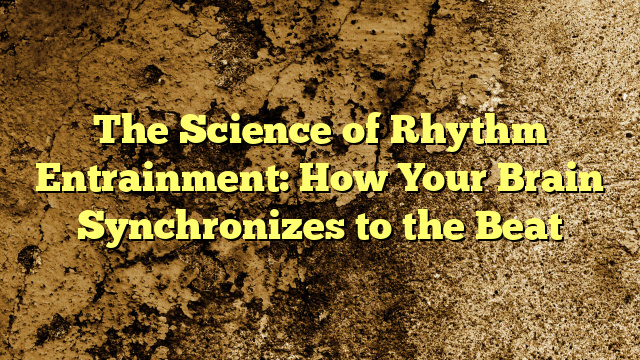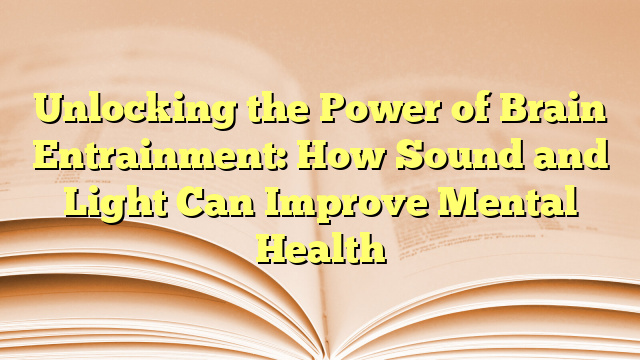Rhythm is an intrinsic part of human life and culture. From the drumbeats of ancient civilizations to the modern electronic music of today, rhythm has always played a central role in music and dance. But have you ever wondered how your brain synchronizes to the beat of a song or a drum? This phenomenon is known as rhythm entrainment, and it is a fascinating area of study in the field of neuroscience.
Rhythm entrainment refers to the process by which external rhythmic stimuli, such as music or a metronome, influence the internal rhythms of our brain and body. Our brains have a natural tendency to synchronize to external rhythms, a phenomenon that has been observed in various studies using brain imaging techniques like fMRI and EEG.
How Does Rhythm Entrainment Work?
When we listen to music or engage in rhythmic activities like dancing, our auditory system processes the rhythmic cues in the music and sends signals to various parts of the brain, including the auditory cortex, motor cortex, and basal ganglia. These regions work together to coordinate our movements and synchronize our brain waves to the beat of the music.
Research has shown that rhythmic stimuli can influence our brain activity in a number of ways. For example, studies have demonstrated that listening to music with a fast beat can increase our heart rate and breathing rate, while music with a slow tempo can have a calming effect on our nervous system. This suggests that rhythm entrainment can have a direct impact on our physiological functions and emotional state.
The Benefits of Rhythm Entrainment
There are many benefits to rhythm entrainment, both in terms of our physical and mental well-being. For example, engaging in rhythmic activities like dancing or drumming can improve our coordination, motor skills, and cognitive abilities. It can also help reduce stress and anxiety, improve mood, and enhance social bonding when done in a group setting.
Furthermore, rhythm entrainment has been used therapeutically to help individuals with neurological disorders such as Parkinson's disease and stroke recover their motor functions. By engaging in rhythmic activities, patients can improve their movement control and coordination, as well as enhance their overall quality of life.
Conclusion
Rhythm entrainment is a fascinating area of research that sheds light on how our brains respond to rhythmic stimuli and synchronize to the beat of music. By understanding the science behind rhythm entrainment, we can harness its benefits to improve our physical and mental well-being, as well as enhance our social interactions and creative expression. So next time you find yourself tapping your foot to the beat of a song, remember that your brain is hard at work entraining to the rhythm.
FAQs
1. Can anyone entrain to rhythm?
Yes, rhythm entrainment is a natural phenomenon that occurs in most individuals. However, some people may have a stronger innate sense of rhythm or may require more practice to synchronize to external rhythms.
2. How can I improve my rhythm entrainment?
You can improve your rhythm entrainment by engaging in rhythmic activities like dancing, drumming, or playing a musical instrument. Practice regularly and expose yourself to a variety of rhythmic stimuli to enhance your synchronization abilities.
3. Can rhythm entrainment be used therapeutically?
Yes, rhythm entrainment has been used therapeutically to help individuals with neurological disorders, motor impairments, and mental health issues. By engaging in rhythmic activities, patients can improve their cognitive abilities, motor skills, and emotional well-being.
Unlock Your Mental Potential



